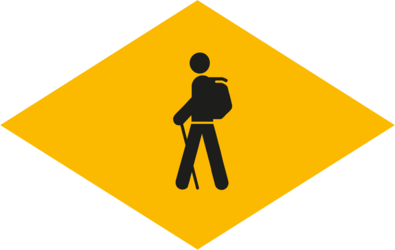Staying safe while on the go
Planning and preparing
Think about why you want to go on the hike: Should it be leisurely-enjoyable or sporty-challenging? Are you alone, a couple or a family? Careful planning can prevent many hiking accidents. For route selection and determination of distances, altitude differences and marching time, hiking and country maps as well as hiking books can be used, which also provide further valuable information about the type of terrain and trail conditions. GPS tour suggestions can be found here. Take into account trail conditions and weather requirements. Also inform third parties about your tour.
Safe mountain hiking
For white-red-white mountain hiking trails you need fitness, surefootedness and a head for heights. Are you ready for white-red-white? Find out:
Click here for the quiz and the campaign.
Definition «mountain hiking trails»
Marking white-red-white
The callenging trails are mostly steep, narrow and partiallly exposed. Particulary difficult passages are secured with ropes.
Footwear suitable for mountains is necessary on all described hikes. Hiking with children requires particularly careful planning. On steep paths, children should be secured with a rope.
Correct equipment
In the mountains, the weather can change suddenly and unexpectedly (rain, thunderstorms, hail, snow down to low altitudes even in summer and autumn). Therefore, appropriate equipment is vital. Wear sturdy hiking boots with treaded soles. Take sun and rain protection as well as warm clothing. Remember to bring a first-aid kit and a cell phone for emergencies.
Please note that there is a ban on drones in the whole of Alpstein.
While hiking
- Do not leave the officially marked hiking trails.
- Small steps and a steady pace save energy uphill and protect the joints downhill.
- Do not take risks in case of bad weather, indisposition (weakness) or other difficulties. Turn back in time and do not force anything.
No camping
The Alpstein is neither a tent site nor a campsite. Camping is not permitted. Stay overnight in a mountain inn or on an alp, and in any case, follow the instructions of the alp staff.
If you prefer to spend the night in a tent, we refer you to the >official campsites around Appenzell.



